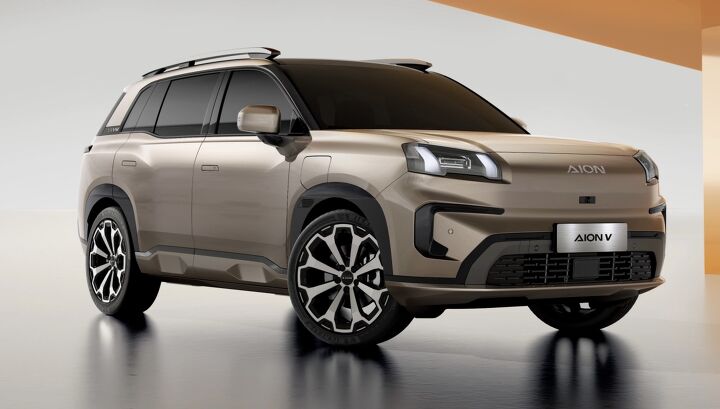
Guangzhou Automobile Group (GAC) has partnered with Magna International to build the all-electric Aion V in Europe — dodging regional tariffs that would likely have prevented the model from selling.
While historically a parts manufacturer, Magna is no stranger to assembling entire vehicles these days and has previously been tapped to handle models like the Jaguar I-Pace and E-Pace. The same goes for the collaborative efforts between BMW and Toyota that yielded the Z4/Supra. However, many of its latest efforts have been focused on Chinese models as arrangements with European brands have wrapped up.
Magna now conducts final assembly on several cars from China’s Arcfox (a subbrand of BAIC) and XPeng. With that in mind, building the GAC Aion V should be a breeze. Now more of a contract manufacturer than a parts supplier, Magna seems to be directly responsible for bringing five Chinese models into the West.

The state-owned Guangzhou confirmed that the all-electric Aion V will be built at Magna’s facility in Graz, Austria. This sets the stage for European sales without the hurdle of lofty importation fees.
Europe hasn’t gone quite as tariff crazy as the United States in recent years. But the EU still introduced provisional tariffs on Chinese-made EVs, which top out around 38 percent, in 2024. Considering how effectively the United States’ 25-percent tariffs on imported trucks (known colloquially as the “chicken tax”) has been at keeping away desirable foreign models for decades, Europe correctly assumed it could postpone the presumed invasion of Chinese EVs.
But anyone who has followed the automotive industry knows that there’s always a loophole to exploit. While America’s chicken tax may have ended the influx of Toyota Hiluxes and Datsun 220s in the 1960s, Japanese pickups would return years later. Desperate for smaller, economical models in the wake of the oil crisis, American brands began building Japanese trucks stateside wearing Western badges. Meanwhile, Japanese automakers were gradually setting up their own factories in North America.

By leveraging Magna as its point of final assembly, GAC can effectively get around European tariffs. They’ll still be Chinese models, sold by a Chinese brand. But they;ll be manufactured in the West on the same lines Fisker assumed would continue building the Ocean EV.
As for the Aion V, the crossover comes with a choice between 62 kWh, 75 kWh, and 90 kWh battery packs — the largest of which is supposed to yield over 450 miles between charges. There is also a variant that comes with a small gasoline-powered range extender. The crossover uses the same Chinese-designed architecture as the Toyota bZ3X and should be functionally similar in most respects.
However, it sounds as though the Magna-built model will launch with only the 75 kWh battery pack and front-wheel drive. Customers will get about 200 horsepower in a vehicle that’s packaged to be about the size of a Honda CR-V or Toyota RAV4. But, the Aion is likely to be priced several thousand euros lower than those models. Of course, this is influenced by how inflated the pricing of models like the RAV4 and CR-V happen to be in Europe relative to the United States.
Like many Chinese automakers, GAC wants to expand globally. While Geely and BYD seem to have made the most headway in Europe thus far, practically every Chinese brand eventually wants to field an affordable, all-electric crossover that can be sold globally. The Aion V will undoubtedly be GAC’s attempt to do so.

[Images: GAC]
Become a TTAC insider. Get the latest news, features, TTAC takes, and everything else that gets to the truth about cars first by subscribing to our newsletter.


